Please join us for our Art Talks program all about the work of Norman Rockwell next Thursday May 30th at 6pm on Zoom. The event led by Janet Mandel will take us through some of Rockwell’s famous works.
Norman Rockwell was born in 1894 in New York City. From an early age, Rockwell knew he wanted to pursue a career in art and at 14 he enrolled at the New York School of Art. In 1910, he left the Art School to study at the National Academy of Design and later at the Art Students League. After completing school, Rockwell’s career took off.
Still a teenager, Rockwell’s first commission was of Christmas cards and was hired as the director of Boy’s Life, the publication of the Boy Scouts of America. When he was twenty one, the family moved to New Rochelle, New York. Rockwell quickly made friends with the local illustrators and began working with Clyde Forsythe. Together they created artwork for Life, Literary Digest and Country Gentlemen. In 1916, Rockwell painted his first solo work for the Saturday Evening Post. Throughout his career, the Post would use 231 designs. In 1930, Rockwell married his second wife, Mary Barstow and their family moved to Vermont where he focused on small town America. One of his most well known works, the Four Freedoms came in 1943 after President Roosevelt’s address to Congress.
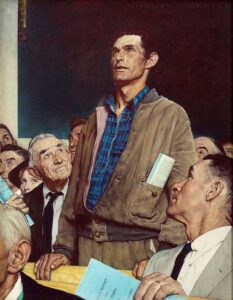
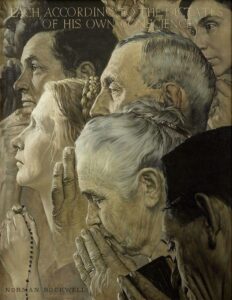
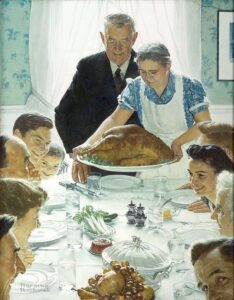
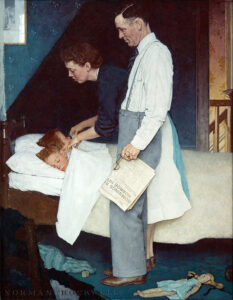
Four freedoms left to right: Freedom of Speech, Freedom of Worship, Freedom from Want, Freedom from Fear
Due to the success of the Four Freedoms, the works were loaned out on tour throughout the United States for a special exhibition from the Post and the Treasury Department. The tour raised more than 130 million dollars for the war effort. 1943 also brought Rockwell tremendous sadness as a fire destroyed his studio, several paintings and historical costumes. In the early 1950s, Rockwell moved his family to Stockbridge Massachusetts and with the help of his son Thomas, Norman wrote his autobiography, My Adventures as an Illustrator. In 1963, Rockwell ended his partnership with The Saturday Evening Post and began working for Look Magazine. At Look, Rockwell started painting and illustrating some of his important causes such as civil rights, poverty and Space travels.
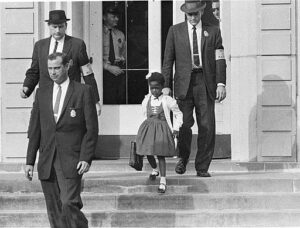
In 1963, Rockwell created “The Problem We All Live With”* and it appeared on the cover of Look on January 14, 1964. This painting depicts Ruby Bridges walking into school surrounded by three US Marshals on her way to the William Franz Elementary School. The painting shows us Ruby on her monumental walk during the Civil Rights Movement and is a direct commentary on segregation and racism in America. We are shown the scene from Ruby’s height making the viewer look through her perspective. Rockwell made this during the height of the Movement and is now seen as a symbol. Though Rockwell never met Ruby, later in her life she admired the decision to show her life.
Please click on the title to see the painting on the Kennedy Center website
“Here was a man that had been doing lots of work, painting family images, and all of a sudden decided this is what I’m going to do…it’s wrong, and I’m going to say that it’s wrong…the mere fact that [Norman Rockwell] had enough courage to step up to the plate and say I’m going to make a statement, and he did it in a very powerful way…even though I had not had an opportunity to meet him, I commend him for that.” Ruby Bridges on Norman Rockwell
In 1973, Rockwell established his own trust to preserve his art with the Old Corner House Stockbridge Historical Society, which later became the Norman Rockwell Museum at Stockbridge. Rockwell received the Presidential Medal of Freedom in 1977. One year later, Rockwell passed away on November 8, 1978 at 84. The state of Massachusetts named Rockwell the official state artist.
For More information
Norman Rockwell Museum – https://www.nrm.org/about/about-2/about-norman-rockwell/
The Problem We Face Article from The Kennedy Center – https://www.kennedy-center.org/education/resources-for-educators/classroom-resources/media-and-interactives/media/visual-arts/norman-rockwell–the-problem-we-all-live-with/
Four Freedoms Painting Images from the Museum of Fine Art Houston, Texas- https://www.mfah.org/blogs/inside-mfah/norman-rockwells-four-freedoms
My Adventures as an Illustrator by Norman Rockwell
American Mirror: The Life and Art of Norman Rockwell by Deborah Solomon
Norman Rockwell’s America by Christopher Finch

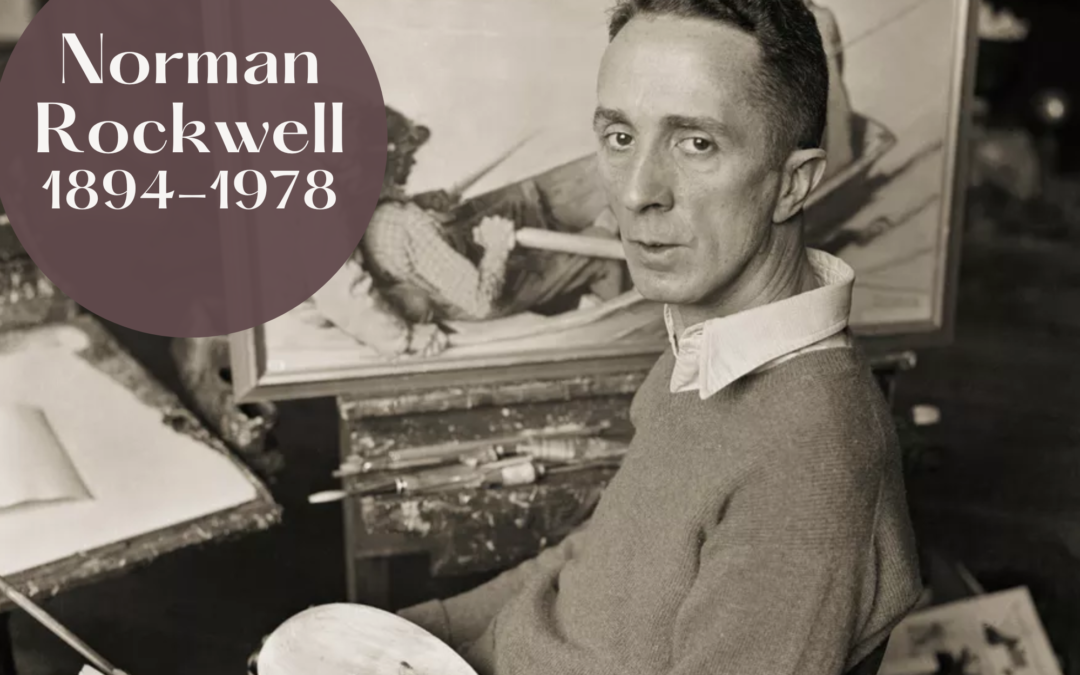
Recent Comments